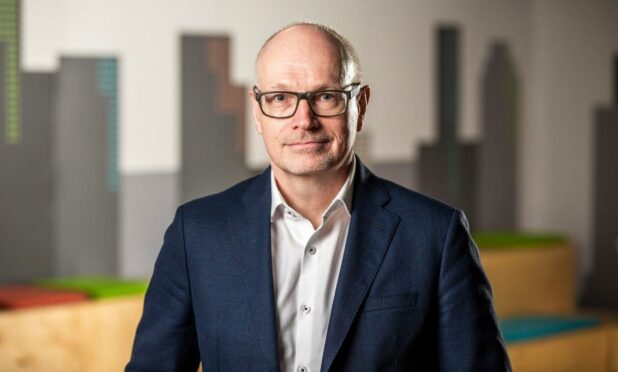Here in Scotland, we’ve got something special that deserves to be celebrated – our energy industry.
I’m not a climate sceptic. Quite the opposite. I’m 100 per cent committed to a net-zero carbon future and see our energy industry as a large part of the solution, not part of the historic problem.
More specifically, I believe Scotland is home to a unique mix of assets that includes our geology, skills, infrastructure, and indefatigable spirit of innovation – which will enable us to lead the world in developing one of the most critical climate technologies, namely carbon capture, utilisation, and storage, or CCUS.
The importance of CCUS
So, what is CCUS? And why is it important?
There are parts of our economy that, for the foreseeable future, can’t yet be decarbonised. Much of our industry requires the type of intense on-tap heat not currently possible from renewable energy sources.
That’s not just my view. It’s the view of the Climate Change Committee, the independent statutory body that advises our governments on emissions, which describes CCUS as “a necessity, not an option”.
As its name suggests, CCUS is about capturing CO2, at scale, and storing it underground. Doing so requires the same geology, infrastructure, skills, and innovation we already have here in Scotland.
Our infrastructure can be put into reverse, quite literally. And, instead of pumping hydrocarbons out we can pump CO2 in, trapping it in the vast underground reservoirs that have been left empty by 50 years of oil and gas production.
I don’t want to underplay the challenges ahead. Repurposing the existing infrastructure is still a significant undertaking. But we have a strong track record of rising to such challenges.”
Instead of building expensive new pipelines, along with organising new planning consents, training a new workforce in gas handling, and building new ports and processing facilities, with all the associated environmental impact, all of which are being considered in the UK and the world, everything we need is already here, in spades.
In fact, by some estimates, Scotland has enough underground storage potential to take 65 years’ worth of total UK emissions, and the pipelines proposed for re-use have double the capacity of the UK’s total 2030 CCUS targets.
I don’t want to underplay the challenges ahead. Repurposing the existing infrastructure is still a significant undertaking. But we have a strong track record of rising to such challenges.
Consider, for example, how we have continued to squeeze value from the UKCS, one of the world’s most challenging oil fields, through new approaches and new technology.
Even though hydrocarbons are getting ever more difficult to access, production costs in the North Sea have fallen by an estimated 50% per barrel over the past five years.
That’s one of the reasons why, within the energy sector, the world often looks to Scotland for inspiration.
Even though hydrocarbons are getting ever more difficult to access, production costs in the North Sea have fallen by an estimated 50% per barrel over the past five years.”
Here at Petrofac, we are committed to helping our clients to meet the world’s evolving energy needs.
Redirect skills to growing markets
In practice, this means drawing on our strong heritage in technologies such as offshore wind and clean fuels re-directing our engineering skills to growing markets like hydrogen, waste-to-fuel and CCUS (for example, we are supporting initiatives such as the Acorn project, which is part of the Scottish vision for CCUS, and Australia’s Arrowsmith project, one of the world’s largest green hydrogen initiatives), and progressively reducing the environmental impact of our operations through efficiency gains and the application of digital technologies.
My hope, therefore, is that with Cop26, the UN Climate Change Conference, coming to Scotland this year, we can shine a light on the way our energy industry is evolving, that Scotland’s CCUS cluster two initiatives can be showcased on a global stage, and that our energy industry can help to decarbonise the entire UK in a way that is safe, cost-effective, quick, and environmentally efficient while creating a just transition in the process.
The UK government’s £1billion pledge to accelerate CCUS is vital. More government support would help scale up the technology, and I’d like to think a significant share can be directed north of the border – where we are so well equipped to put it to good effect and support the whole of the UK’s journey to net-zero.
John Pearson is chief operating officer for Petrofac’s New Energies business and is based in Aberdeen and London.
John is writing in support of the Back the Scottish Cluster campaign, helping to illuminate the advantages of the Scottish Cluster in the BEIS cluster sequencing process.










